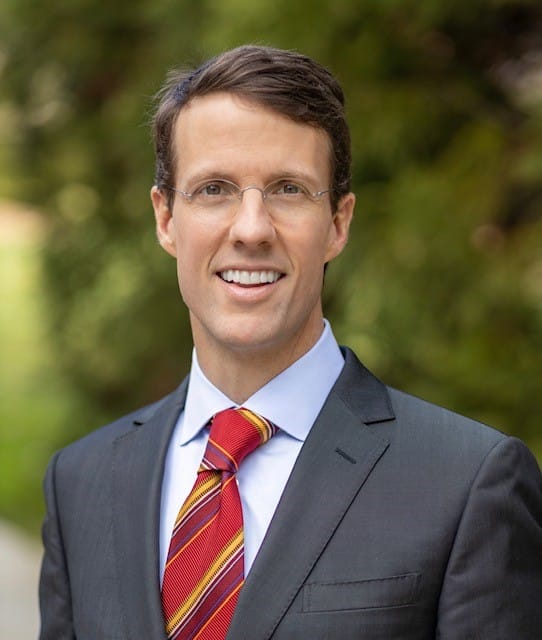3 min read
Excellence in Equities Trading: Darrin Sokol, Lazard Asset Management
Veteran buy-side trader cites Leon Cooperman as a strong career influence.

Marc Wyatt, Head of Trading, T. Rowe Price, shares his thoughts on the asset management industry’s challenges, the role of traders, and the use of technology.
What are the biggest challenges the asset management industry faces today?

“Asset management industry” is a broad category, so let me respond with a few challenges in the active management sector that may apply to other parts of the industry. The value proposition for active managers remains very robust, especially given the market conditions we have seen in recent years, but to execute on the opportunity we must deliver against multiple headwinds. The list below is not exhaustive but are frontal lobe in today’s environment.
Three of these are related: passive, performance, and fees/costs. The growth of passive has an obvious impact on active management flows, but the increase in market share also has implications on liquidity, market efficiency, price discovery, and volatility. The passive threat makes performance even more critical. Outperforming benchmarks and passive vehicles after fees is what investors in active strategies demand. The dislocations noted above can distort markets, leading to increased opportunity for active but only where there is cleareyed analysis of influencing factors. Both passive competition and the need for outstanding performance feed into the pressure coming from both sides of fees versus costs. The low entry point for passive and the competitive landscape in active continue to pressure management fees. On the other side, costs in the form of technology, market data, compliance, and client reporting continue to rise. That means doing more with less, and against this backdrop, active management increasingly requires scale.
Others I would highlight are evolving regulatory requirements and the pace of technology change/innovation.
Based on my time at the Securities and Exchange Commission, I empathize with the need for regulation to keep pace with the frenetic pace of change and innovation in the global financial markets. This requires new rules or amending existing regulations. In addition, it is natural for regulators to focus on issues or emerging practices that are unique to their markets. However, this can lead to regulations that may not align (or may even contradict). These diverging regimes introduce challenges to global asset managers striving to be compliant in every jurisdiction. Moreover, these requirements may introduce unintended consequences on liquidity or market participant behavior or constrain opportunities to optimize returns.
As I just noted, emerging platforms and technologies are creating opportunities for scale. These changes and innovations represent a great opportunity for active management to compete. The challenge is optimizing the technology spend to deliver the greatest impact on the platform. It is notoriously hard to clearly draw a direct line between tech spend and investment return on investment, but that doesn’t mean we shouldn’t try. Each part of the organization will have its “wish list.” The key will be a disciplined prioritization of technology budget and strategically sequencing projects to achieve the ever-elusive, perpetually evolving target state.
Which of those issues can traders help to resolve?
From my seat, traders can lean in on performance, costs, and technology/innovation. They also play a key role in managing and controlling risk in the investment process.
Our traders are an integral part of the investment process by delivering performance for clients. We are not simply an execution desk. We look to provide value add in idea generation, portfolio construction, and/or sourcing unique liquidity, among others. The value of trading is on full display during volatile markets as traders understand the objectives of the portfolio managers and can take advantage of market dislocations in size.
The cost and technology impact are related. Innovation and automation on the trading desk can enable greater capacity without increasing head count or risk. Leveraging lessons from one asset class and applying them to the nuances of another market can facilitate automation while reducing implementation costs and increasing speed to market.
What are some effective ways for buy-side traders to engage with and/or support change where it’s needed?
Embrace change. Engage with emerging technologies to understand the landscape. The next-generation trader will need a deep understanding of how the various tools in their toolbox fit together and which parts of their workflow can be automated. Our team continues to challenge the status quo and leverage data to optimize execution for clients. We strive to have the traders operating at the highest and best use, which is adding value to our investment process and fostering strong relationships with our sell-side partners and liquidity providers. If they can automate flows or reduce manual intervention, they can engage with stakeholders more frequently where some of the greatest value lies.
Foster strong relationships with your technology partners. Invite them to the desk and let the developers witness your process firsthand. Tight engagement between the desk and technology teams is critical to ensuring that innovation is effective from both a productivity and a risk perspective. I encourage our traders to look at ways to supplement their trading acumen with quantitative or coding skills and/or to champion innovation on the desk.
What are your views on the use of technology in asset management?
To say it is essential would be an understatement. Given the competitive landscape and challenges mentioned earlier, technology plays a critical role in delivering positive outcomes for clients. In trading, technology enables us to optimize the vast amounts of data to drive improved execution decisions. The push of relevant information to the trader as an order hits the blotter makes for better decisions without the need for unproductive context switching. We are seeking to streamline the entire order-to-trade life cycle. This not only keeps the team operating at their highest and best use but also mitigates operational risks.
For portfolio managers and analysts, technology is streamlining investment decisions and insights. We have dedicated technology partners implementing emerging technology to supplement our investment professionals. We refer to this as intelligent augmentation. The emergence of new platforms such as ChatGPT and Bard represent opportunities to further enhance the investment platform.
Finally, the old debate of “buy versus build” is antiquated. The new framework is “buy and build and integrate,” which requires interoperability. Build custom tools when protecting intellectual property. Leverage third-party vendors on commoditized workflows. Create seamless, continuous integration and flow of data between the tools.

3 min read
Veteran buy-side trader cites Leon Cooperman as a strong career influence.

7 min read
trading ETFs in volatile markets requires a tactical and strategic approach to minimize transaction costs.

4 min read
A market structure shift is inevitable as new entrants alter the liquidity landscape.